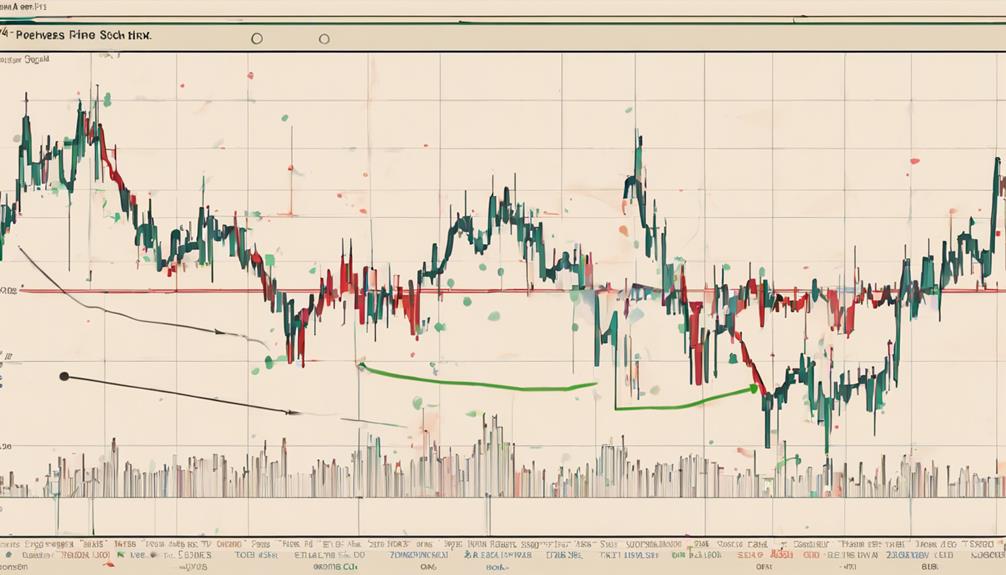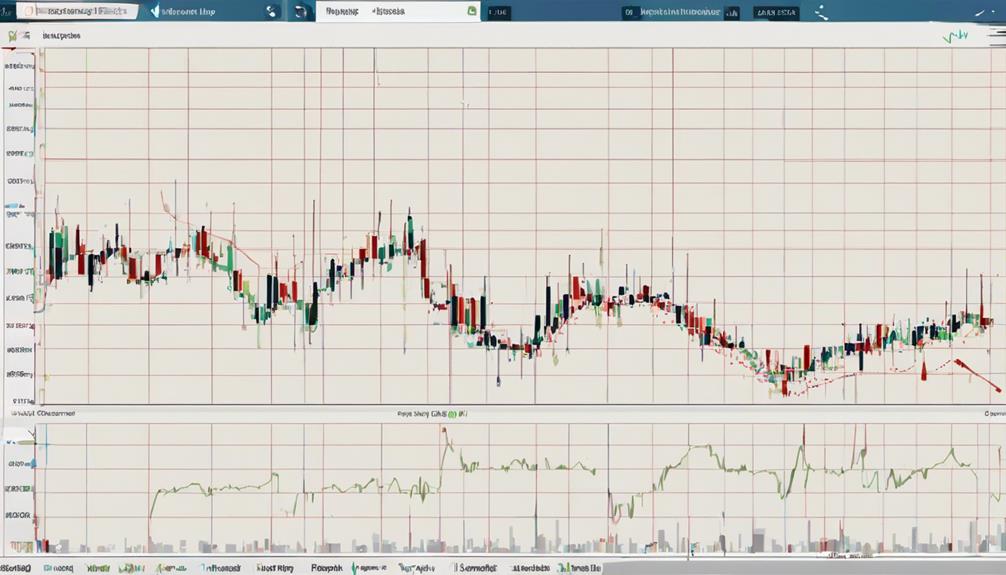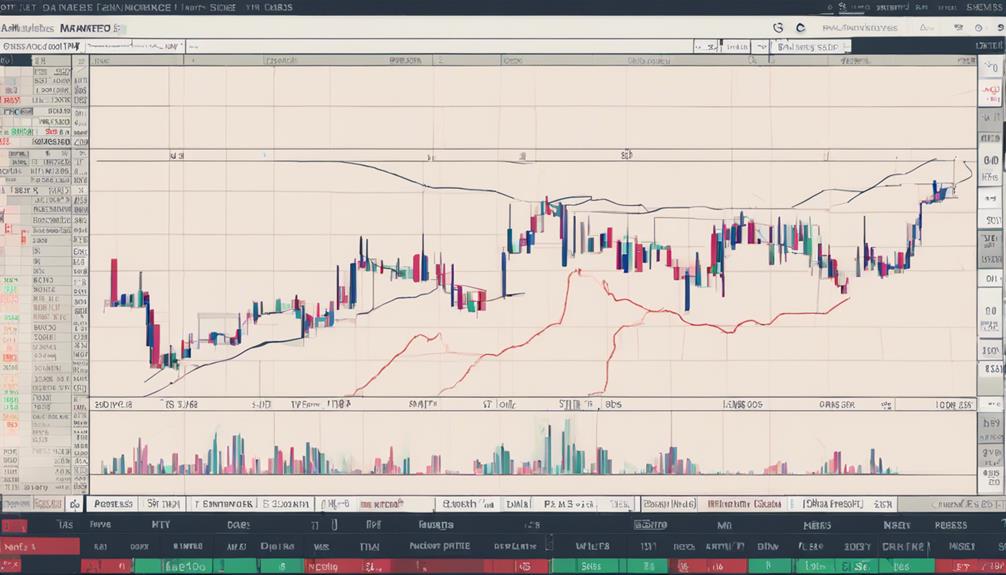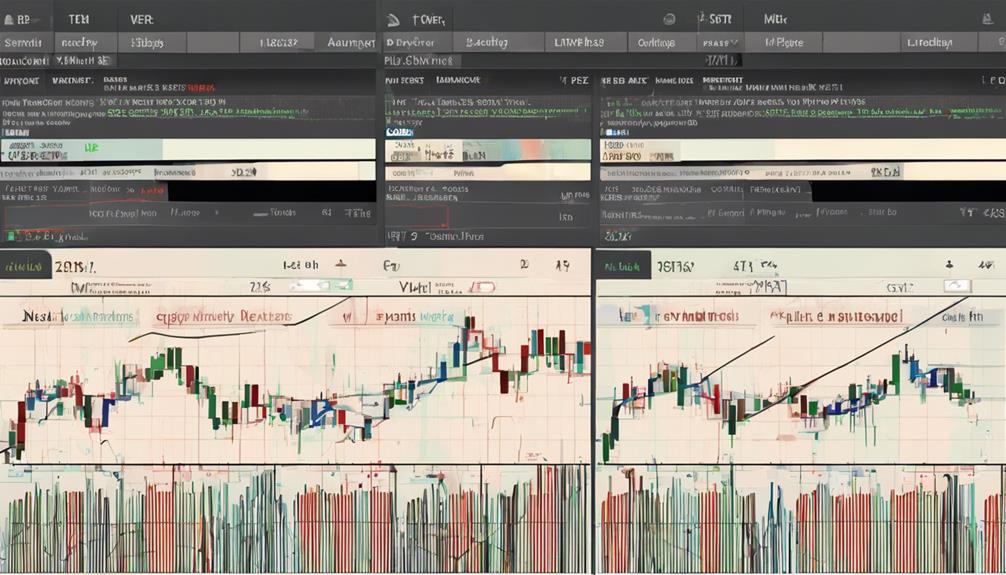You know the significance of RSI in stock market trading when it comes to evaluating market momentum and identifying potential buy/sell opportunities.
But have you considered the impact RSI can have on your overall trading strategy and decision-making process? Understanding how RSI can complement your trading arsenal may be the key to unlocking consistent profits and navigating the complexities of the stock market with more confidence.
So, why exactly is RSI essential for your success in stock market trading?
Importance of RSI in Trading
The significance of RSI in trading lies in its ability to assist you in identifying overbought and oversold conditions in the stock market, presenting potential trading opportunities. By analyzing RSI, traders can determine the momentum of stock price movements, offering valuable signals for entry and exit points. This aids in predicting trend reversals and confirming the strength of existing trends, crucial aspects of technical analysis in the stock market.
Integrating RSI with other technical indicators enhances your trading strategies, empowering you to make well-informed decisions. Understanding RSI levels and signals not only improves your trading acumen but also plays a vital role in effective risk management within the dynamic realm of stock market trading.
RSI as a Trend Indicator

Oscillating between 0 and 100 based on price changes, RSI serves as a valuable trend indicator in stock market trading. RSI levels above 70 typically indicate overbought conditions in an uptrend, suggesting that a stock may be overvalued and due for a potential correction.
Conversely, in a downtrend, RSI levels below 30 signal oversold conditions, indicating a possible undervaluation and potential buying opportunity. By staying within specific ranges during trends, RSI aids in trend analysis, providing insights into the strength and direction of the current trend.
Recognizing RSI as an oscillator that measures momentum, traders can utilize it to anticipate potential trend reversals, making it a crucial tool for informed decision-making in stock market trading.
Interpreting RSI Signals

RSI signals play a critical role in guiding traders on potential buy or sell opportunities based on market conditions and price movements. When interpreting RSI signals, keep these key points in mind:
- RSI values above 70 indicate overbought conditions, while values below 30 suggest oversold conditions.
- Crossing RSI lines can signal buy or sell opportunities for traders to consider.
- RSI helps predict security performance and validates trends and reversals in the stock market.
- RSI readings fall into bands during trends, aiding in determining trend strength and potential reversals.
Understanding these signals is crucial for making informed trading decisions based on technical analysis.
RSI Divergences and Reversals

Observing price movements in contrast to RSI indicators can provide valuable insights into potential shifts in market momentum. RSI divergences, like bearish divergence, where prices rise as RSI falls, may indicate upcoming price declines.
Conversely, bullish divergence, characterized by RSI rising as prices fall, could suggest potential price increases. These divergences in the RSI serve as early warnings of possible changes in stock price momentum. Recognizing and interpreting these patterns is crucial for traders looking to anticipate trend reversals and make well-informed trading decisions.
How Does RSI Help with Stock Market Trading?
The role of RSI in market trends is essential for stock market trading. RSI helps traders identify potential reversal points and overbought or oversold levels in the market. By analyzing RSI indicators, traders can make informed decisions about buying or selling stocks, ultimately improving their trading strategies.
RSI Vs. Other Technical Indicators

When comparing RSI to other technical indicators in stock market analysis, understanding their distinct functions and characteristics is essential for informed decision-making.
- RSI focuses on overbought/oversold conditions and momentum, while MACD is a trend-following indicator based on moving averages.
- RSI helps identify potential reversals and entry/exit points, while MACD uses crossovers to signal buying and selling opportunities.
- RSI compares recent price changes to evaluate market conditions, while MACD calculates the difference between two moving averages for trend analysis.
- Traders may use RSI for short-term momentum signals, while MACD provides insights into longer-term trends and potential reversals.
Understanding the differences between RSI and MACD can significantly enhance your ability to interpret market movements effectively.
Frequently Asked Questions
Why Is RSI Important in Trading?
In trading, RSI is crucial for spotting overbought or oversold conditions, signaling potential reversals and buy/sell points. Combine RSI with other indicators for better analysis. Timing entry and exit using RSI is key.
What Is the Benefit of Rsi?
Feeling uncertain in your trades? RSI clarifies by pinpointing overbought and oversold areas in stocks. It signals potential reversals and entry/exit points. With readings above 70 signaling overbought and below 30 for oversold conditions, RSI aids in validating trends.
Does RSI Really Matter?
Yes, RSI really matters. It assists in identifying market conditions accurately, providing signals for potential trend reversals and buy/sell opportunities. Understanding RSI levels is crucial for successful trading strategies, enhancing decision-making processes and improving outcomes.
Do Professional Traders Use Rsi?
Professional traders frequently rely on RSI to pinpoint overbought or oversold conditions, guiding them in identifying entry and exit points for trades. Combining RSI with other indicators enhances accuracy for optimal trading strategies.
Conclusion
In conclusion, RSI is crucial for stock market trading due to its ability to identify overbought and oversold conditions, trend reversals, and optimal entry/exit points.
Did you know that according to a study by Investopedia, traders who incorporate RSI into their strategies see an average increase of 4.5% in their returns compared to those who don't?
This statistic underscores the importance of RSI in enhancing trading performance and profitability.
